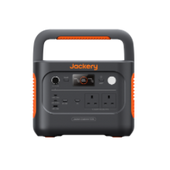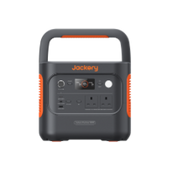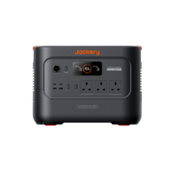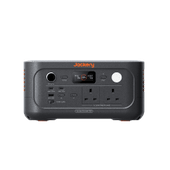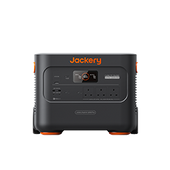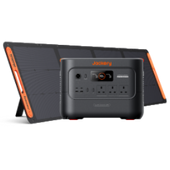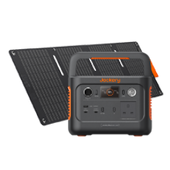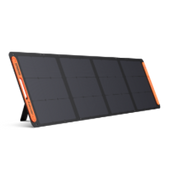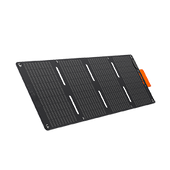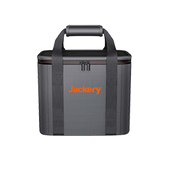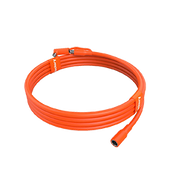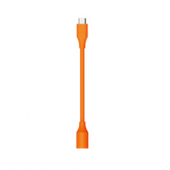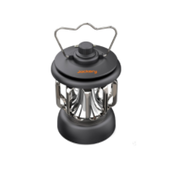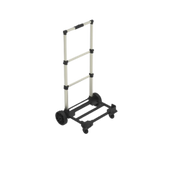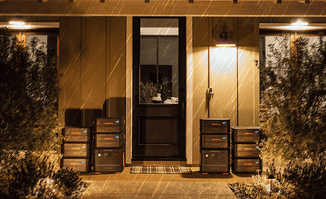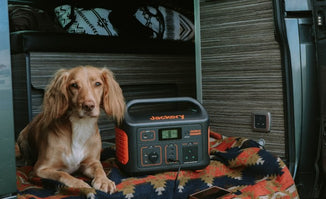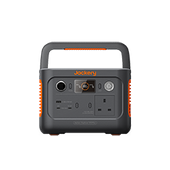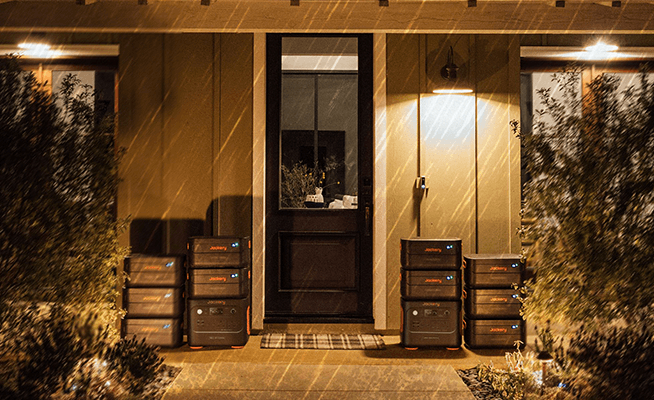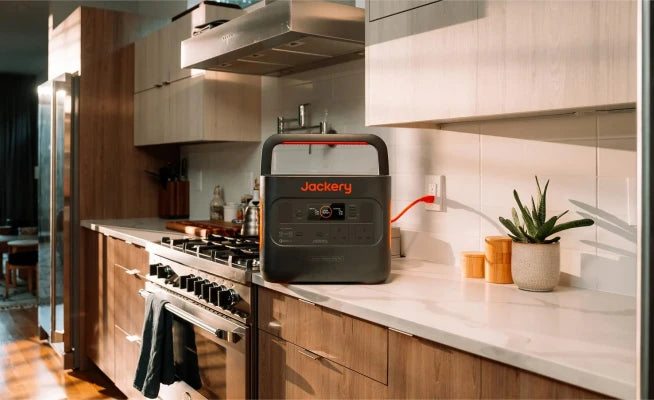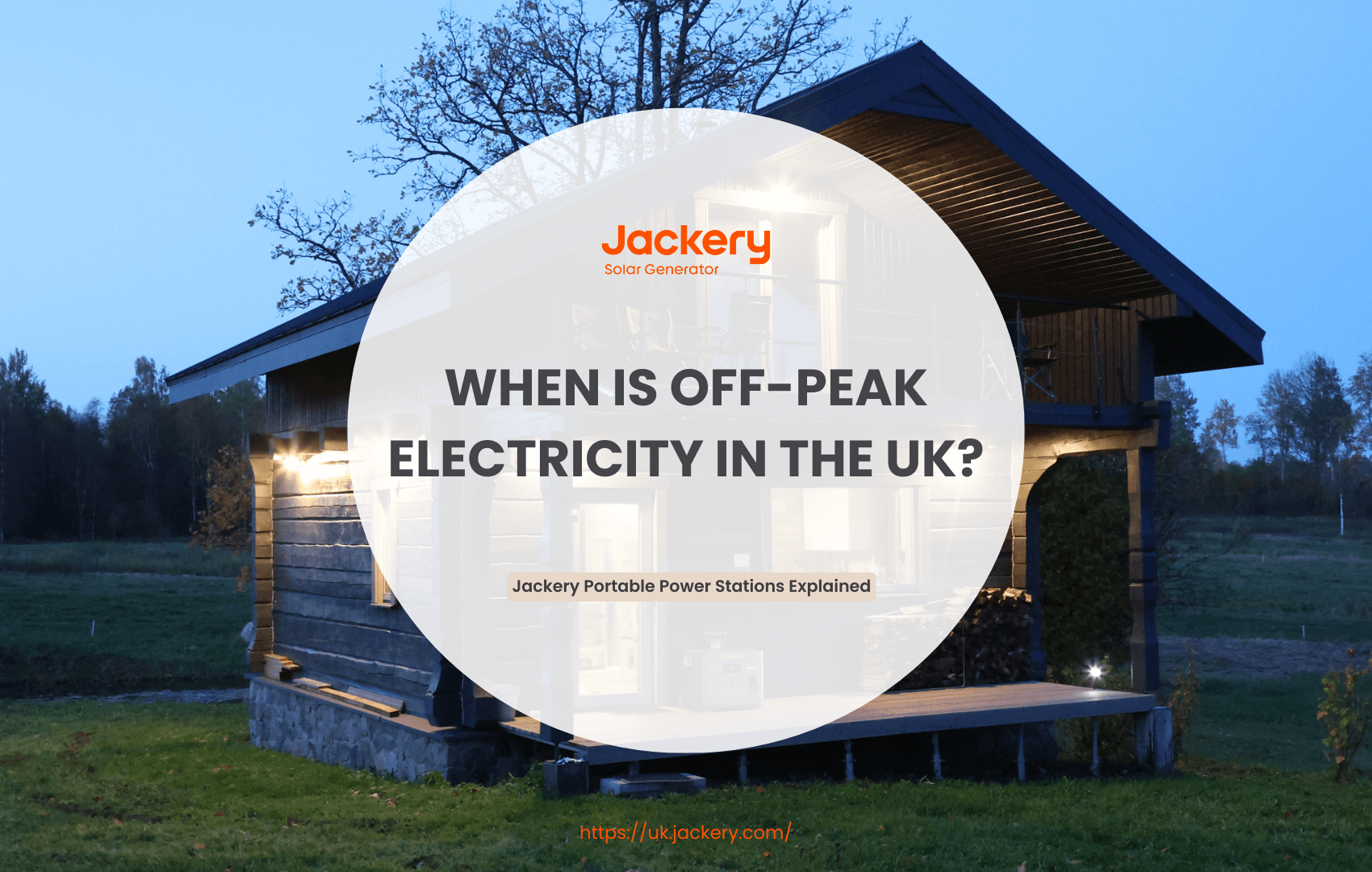Most consumers pay the same electricity bill regardless of whether they use it during the day or at night. However, an increasing number of consumers are adopting a new type of power billing plan known as time-of-use (TOU). Almost every TOU plan has one thing in common: off-peak electricity is the lowest. Why?
Because off-peak electricity times have reduced demand on the grid, power firms charge lower prices. In the United Kingdom, off-peak electricity is typically available between 10 p.m. and 8 a.m., during the night. This opens up some fantastic options for households to save money, such as shifting their electricity usage (for example, charging an electric car) to off-peak electricity times.
Alternatively, you can store cheaper off-peak electricity in a battery system (such as the Jackery Explorer 3000 v2 and 2000 Plus) and use it during peak electricity times when rates are higher.
|
Key Takeaways: |
|
What are the Peak and Off-Peak Times for Electricity?
Most users receive a flat-rate electricity bill, which means they pay the same price per kilowatt-hour no matter when they use it. However, if you utilise a time-of-use (TOU) tariff, you may qualify for varying prices depending on the time of day. These flexible energy plans divide electricity supply into peak and off-peak periods, with varying tariffs to help you use energy more efficiently.
Peak Electricity Time: This refers to the period of the day when energy usage and electricity costs are at their highest, typically during the day or evening. For example, peak electricity demand normally occurs between 4 p.m. and 8 p.m., when people return home, use appliances, and set their thermostats.
Off-Peak Electricity Time: This refers to periods of the day when power consumption is low, typically between 11 p.m. and 6 a.m. During certain times, the grid is less pressured, hence some suppliers offer lower prices.
However, your energy company determines the exact dates for peak and off-peak electricity. For example, some suppliers offer peak and off-peak electricity from 11 p.m. to 6 a.m., while others offer peak and off-peak electricity from 10 p.m. to 7 a.m. If you utilise a time-of-use electricity pricing, be sure you know the exact times.

When Is Off-Peak Electricity in the UK?
Off-peak electricity times are when electricity demand is low, and with the appropriate time-of-use tariff, electricity rates are also cheaper. Not all pricing includes off-peak times. Many typical electricity tariffs offer a single, flat rate for electricity usage throughout the day and night. You may only benefit from lower pricing on specific tariffs, such as Economy 7, Economy 10, or smart tariffs meant for electric vehicles or heat pumps.
In the United Kingdom, off-peak electricity times are often during the night, when grid demand is at its lowest. This usually happens between 10 p.m. and 8 a.m. However, the exact periods are entirely dependent on your energy supplier and the rate you select. Below are the off-peak times for various electricity plans:
|
Tariff type |
Off-Peak Electricity Time |
|
Economy 7 |
Around midnight to 7 a.m. |
|
Economy 10 |
Overnight: 7 hours (e.g. 10 p.m.–5 a.m) Mid-day: 2 hours (e.g. 1 p.m.–3 p.m) Evening: 1 hour (e.g. 8 p.m.–9 p.m) |
|
EV tariff |
Commonly from midnight to 5 a.m. |
|
Dynamic smart tariff |
Cheapest late at night into early morning, most expensive 4 p.m. to 7 p.m. weekdays |
Economy 7: It comprises two separate electricity rates, one standard rate and an off-peak rate, which provides seven hours of low-cost electricity. This off-peak electricity time usually runs from 12 a.m. until 7 a.m.
Economy 10: This plan provides 10 hours of off-peak electricity, spread out over different intervals during the day and night. Off-peak electricity timings are often between 10 p.m. and 8 a.m.
EV Tariffs: Electric vehicle (EV) tariffs are designed exclusively for electric car owners and are best suited for charging between midnight and 5 a.m. For example, Scottish Power has an EV Saver price that allows you to charge between midnight and 5 a.m. at a cheaper rate of 7.2 pence per kilowatt-hour. Furthermore, these programs often utilise 100% green electricity.
Agile & Tracker Tariffs: Dynamic Smart Tariffs Go One Step Further. Plans such as Octopus Agile set power costs every 30 minutes based on fluctuations in the wholesale market. Electricity is typically cheaper between midnight and 7 a.m., which are considered off-peak hours for electricity use.
Please note that, in addition to electricity plans, specific off-peak times vary by supplier, tariff, and location. For particular off-peak electricity start and end times, please visit your energy supplier's website or contact customer care.
How to Save Money with Off-Peak Electricity?
When your power plan charges different prices at different times of day and your bill is excessive, the best option is to shift your energy consumption to the times when prices are lowest. For example, off-peak electricity times provide an excellent opportunity to reduce your electricity expenditure. You don't need to alter your lifestyle to begin saving money drastically. Here are some basic ideas for taking advantage of off-peak electricity times:

Tip 1: Schedule Nighttime Use for Appliances
Run high-energy appliances such as washers, dryers, and dishwashers during off-peak electricity times. If these appliances have prolonged timers, set them to run at cheaper times.
Tip 2: Charge Your Electric Vehicle at Night
Many Level 2 electric car chargers, like Wi-Fi-enabled smart appliances, now feature smart capabilities that can be turned on and off remotely or at predetermined intervals. For example, scheduling your electric vehicle to begin charging after midnight can dramatically minimise charging rates.
Tip 3: Energy Efficiency Upgrades and Improvements
Investing in energy-efficient equipment is one of the most effective strategies to modify your electricity use habits. To reduce waste, even when using electricity during off-peak hours, use appliances with high energy efficiency ratings (such as A+++). Consider using a heat pump for heating and cooling instead of a typical furnace and air conditioner.
Tip 4: Monitor Energy Usage
Installing a smart meter allows you to monitor your electricity usage in real-time. Viewing your typical electricity usage on your home display or via your utility's app can help you detect patterns, track your shift to off-peak electricity times, and determine whether you're actually saving money.
Tip 5: Use Energy Storage Effectively
If you have a home battery storage system, you can charge during off-peak electricity hours when power prices are low and then use the stored electricity during peak hours to save even more money. Consider installing solar panels to store energy for your home battery, minimising your need for electricity from the grid.
Jackery: A Great Strategy for Saving Money with Off-Peak Electricity
In today's increasingly complex electricity consumption environment, the prudent use of off-peak electricity has emerged as a crucial option for homes seeking to conserve energy and reduce expenses.
When combined with the time-of-use electricity price policy, high-power consumption operations are concentrated on off-peak electricity times to maximise the enjoyment of electricity price discounts, and it can also help the power grid balance the load, resulting in a win-win situation for both the economy and the environment.
As a home emergency power supply or outdoor power supply, Jackery's charging time has a direct impact on electricity costs. To begin charging, use the smart socket at home or customise the charging time of the Jackery Portable Power Station to off-peak electricity times. The following are two recommended Jackery portable power supplies that can fully utilise off-peak electricity:
Jackery Explorer 3000 v2
The Jackery Explorer 3000 v2 is a large-capacity portable power station featuring a 3072Wh battery and offering up to 3600W of continuous output power. Aside from its impressive performance, it's also a practical tool for saving money and optimising your energy consumption. Charging the Jackery Explorer 3000 v2 using off-peak electricity allows you to considerably lower your electricity expenses, resulting in a more economical and environmentally sustainable approach to energy consumption. Here's how the Jackery Explorer 3000 v2 saves money by using off-peak electricity:

Off-Peak Charging at Night; Peak Usage throughout the Day: Charging the Jackery Explorer 3000 v2 from the mains every night during off-peak electricity times (for example, 11:00 p.m.) allows you to avoid peak electricity pricing and save up to 15% on your annual electricity bill. Connect to the mains and launch the "Charging Plan" app to personalise your charging plan and take advantage of cheaper electricity. The battery can be fully charged in about 1.4 hours thanks to its fast charging capability (AC+DC (54V).
Combine with a Solar Panel for Further Energy Savings: While charging during off-peak electricity times, connect it to a Jackery Solar Panel (such as the SolarSaga 200W solar panel) to supplement power with solar energy throughout the day, reducing your reliance on utility power and cutting your electricity cost by up to 22%. Set your energy storage threshold under the app's "Self-powered Mode." When the battery charge exceeds this threshold, the system will operate solely on solar power. If the stored energy level goes below the threshold, the system effortlessly switches to automatic hybrid charging (solar + AC).
Moving Cheap Power to High-Cost Locations: Bring the Jackery, fully charged with inexpensive off-peak electricity, to high-cost or off-grid locations such as construction sites and trade events. This successfully delivers inexpensive electricity, eliminating the need for costly temporary power solutions. While providing up to 3072Wh of power, the Jackery Explorer 3000 v2 is 47% more compact and 43% lighter than comparable models, making it convenient to keep at home or in the car.
Serve as a Home Emergency Power Source to Reduce Power Outage Losses: Use off-peak electricity to charge the Jackery Explorer 3000 v2 completely. Its built-in UPS delivers continuous power even during a power loss, switching in less than 20 milliseconds to keep essential appliances such as lamps and refrigerators operational. When combined with pass-through charging, it provides a stable emergency power source.
Jackery Explorer 2000 Plus
Using off-peak electricity to charge the Jackery Explorer 2000 Plus is a truly cost-effective solution. With a battery capacity of 2042.8Wh and a rated output of 3000W (6000W peak), it can power most household appliances and tools, making it extremely useful. Its quick charging, extraordinarily long lifespan, and extensive growth possibilities lay the groundwork for this strategy's success. Here's how the Jackery Explorer 2000 Plus saves money by using off-peak electricity:

Stores Significant Amounts of Off-Peak Electricity: The Jackery Explorer 2000 Plus features a large energy storage capacity of 2042.8Wh, enabling it to utilise a substantial amount of off-peak electricity. Furthermore, a single Jackery Explorer 2000 Plus station may accommodate up to five additional battery packs, increasing its capacity from 2 kWh to an astonishing 12 kWh. The energy charged in a single off-peak electrical session is sufficient to enable prolonged off-grid use, resulting in significant savings.
Combined with Solar Energy to Further Lower Costs: The Jackery Explorer 2000 Plus has numerous charging options. Plug it into a standard household outlet and charge it completely in roughly 1.7 hours using off-peak electricity. Furthermore, during sunny daylight hours, the Explorer 2000 Plus can be recharged using the solar panel, which takes approximately two hours to charge, thereby minimising the need for full mains charging. This is especially useful for those with patios, balconies, or who frequently engage in outdoor activities.
Safe and Durable Lithium Iron Phosphate Battery: The Jackery Explorer 2000 Plus features a high-quality LiFePO4 battery that is designed to last up to ten years, even with everyday use. Even after 4,000 charge cycles, the battery will still retain 70% of its charge. Furthermore, its revolutionary Charge Shield technology increases battery life by 50%. As a result, with long-term use and the replacement of peak electricity, the Explorer 2000 Plus can save hundreds of yuan each year, while also helping to reduce environmental and carbon emissions.
Smart App Monitors Charging Status: The Jackery Explorer 2000 Plus features remote monitoring and management capabilities via a mobile app, allowing for easy setup of charging schedules. It supports a variety of devices, offers real-time status monitoring, provides custom settings, and includes other useful features. You can remotely monitor the charging process and unplug it after it is fully charged, which is both safe and energy-efficient.
Is Off-Peak Electricity Always Cheaper?
In the United Kingdom, off-peak electricity is often cheaper. On a time-of-use (TOU) plan, the price fluctuates according to the time of day. Peak electricity usage occurs when electricity expenditures are highest, typically on weekday afternoons and evenings.
Off-peak electricity is often the cheapest during late nights, weekends, and major holidays. On a fixed-rate plan, your price per kilowatt-hour (kWh) remains the same regardless of when or how much you consume. Dynamic pricing is continually changing based on real-time energy market conditions, often within minutes. Customers are particularly vulnerable to unexpected price increases during grid emergencies, such as heatwaves.
For the majority of TOU users, the cheapest time to use power is when total demand is low. This usually happens late at night, between 11 p.m. and 5 a.m., when most companies are closed and everyone is sleeping. To encourage customers to use electricity during certain times and help balance the grid, suppliers offer lower prices.
However, off-peak electricity is only cheaper if you apply time-of-use electricity tariffs appropriately. If you are not attentive and consume too much electricity during peak periods, you may end up spending more since you are purchasing more electricity at peak prices.

How Much Can You Save with Off-Peak Electricity?
Using off-peak electricity saves you money on your electricity account, but the actual amount depends on your electricity tariff, usage habits, and any specials offered by your energy provider. The average UK home may save approximately 10% on its electricity expenditure each year. This is because most houses only use high-energy-consuming equipment during off-peak electricity times. Using off-peak electricity can save you hundreds of pounds if you have heat pumps or an electric vehicle.
If you're wondering how much you can save by converting from a fixed rate to a TOU rate, the answer boils down to two factors: the price difference between fixed and off-peak electricity, and how much you can move to cheaper times. The potential savings from transferring high-consumption chores to off-peak electricity times are as follows.
|
Appliance / Use |
Typical Energy Use |
Flat-Rate Cost (25.73p/kWh) |
TOU Off-Peak Cost (7.9p/kWh) |
Saving per Use |
Avg. Uses per Week |
Example Annual Savings |
|
Dishwasher (One Cycle) |
1.35 kWh |
£0.35 |
£0.11 |
£0.24 |
3.5 |
~£44 |
|
Washing Machine (Eco Cycle) |
0.8 kWh |
£0.21 |
£0.06 |
£0.15 |
4.5 |
~£35 |
|
Tumble Dryer (One Cycle) |
4.5 kWh |
£1.16 |
£0.36 |
£0.80 |
2.5 |
~£104 |
|
EV Charging (Full Charge) |
40 kWh |
£10.29 |
£3.16 |
£7.13 |
2 |
~£741 |
|
Hot Water / Immersion Heater |
6 kWh |
£1.54 |
£0.47 |
£1.07 |
7 |
~£390 |
In the table above, we used an off-peak electricity price of 7.9p/kWh (British Gas Electric Vehicle, 12 a.m. to 5 a.m.) to show the potential savings. According to Ofgem's price cap for July to September 2025, the average price per kWh is £ 0.25 (Direct Debit).
Based on the facts presented above, the average customer can save more than £600 per year by scheduling high-energy equipment for off-peak electricity times rather than paying the average fixed power price.
Customers who arrange electric vehicle charging during off-peak times can save more than £700 per year. This excludes smaller appliances or other flexible electricity usage that customers may shift to off-peak electricity times in their daily lives.
Is Off-Peak Electricity Right for Your Lifestyle?
Do you want to save money on your electricity bill by using off-peak electricity? Think about your daily existence. Do you work from home and consume a large amount of electricity during the day? Alternatively, do you go away during the day and use appliances in the evening or at night? If you can manage the following, off-peak electricity can be exceptionally cost-effective:

Flexibility of Scheduling
Whether you're a night owl, work from home, or are a freelancer, you'll be able to control your schedule and consume electricity as needed. You can schedule high-energy operations, such as laundry and dishwashing, for off-peak electricity times, like after 10 p.m.
Own Smart or Timetabled Appliances
Many modern smart appliances, such as washing machines, dishwashers, water heaters, and air conditioners, can be programmed or remotely operated. You can schedule them to run automatically during off-peak electricity times (for example, 10 p.m. to 6 a.m.), removing the need for manual operation and saving both time and money.
Electric Vehicle Owners
Electric car batteries have an enormous capacity (usually 50-100 kWh), so charging them can consume a significant amount of energy. If you charge largely during off-peak electricity times, the cost per kWh might be half or even a third of what it is during peak electricity times. The savings might be enormous.
Home Energy Storage
If you already have batteries or plan to install them, you can charge them during off-peak electricity hours and use the stored energy during peak hours to save money. Combining solar power can boost energy self-sufficiency and reduce reliance on the grid. Alternatively, you can buy a portable power station, such as the Jackery Explorer 3000 v2 or 2000 Plus, and use it as a home backup power source for off-peak electricity.
How to Check If You're Eligible for Off-Peak Tariffs?
If you believe that off-peak electricity can save you money and improve your energy efficiency, you can begin planning to move to time-of-use electricity tariffs. Follow the instructions listed below. This is a process that requires rigorous verification, as making the wrong decision could result in greater costs rather than cheaper ones.
Step 1: Determine Whether Energy Suppliers Provide Time-of-Use Electricity Tariffs
Not every UK energy company now provides time-of-use electricity prices. The following UK energy suppliers presently provide time-of-use electricity rates:
Octopus Energy
British Gas
E.ON Next
EDF
OVO Energy
ScottishPower
100Green (Green Energy UK)
Good Energy
Ecotricity
Please note that some energy suppliers offer off-peak electricity for all your needs (for example, Economy 7). Other suppliers provide cheaper off-peak electricity only to residences with high-energy-consuming devices, such as electric cars.
Step 2: Determine Your Eligibility
Confirm that you have a smart meter installed. This is the most crucial stage because modern smart meters are necessary for utilising off-peak electricity. Economy 7/Economy 10 clients will require a meter that can record both the Economy 7 and Economy 10 rates.
This could be a dual-rate (E7/E10) meter or a smart meter set up for both rates. Some energy companies have extra requirements, such as mandating payment by direct debit. As long as you match the eligibility requirements, signing up for time-of-use rates is similar to receiving any other sort of energy rate.
Step 3: Contact Your Energy Supplier
Once you've confirmed your eligibility, contact your energy supplier's customer care line or log in to their official account to enquire about moving to your preferred electricity plan. Your supplier will then determine your eligibility based on your electricity usage, address, and meter type. Once approved, the switch is usually a simple process that requires little effort on your part, and you'll be using off-peak electricity within three weeks.
FAQs
The following are the frequently asked questions about the off-peak electricity:
1. What is the cheapest time to use electricity?
It all depends on your electricity rate. With a regular rate, power costs the same no matter when you use it. With a time-of-use tariff, electricity is most affordable during off-peak hours. For example, the "Economy 7" tariff offers cheaper electricity rates between midnight and 8 a.m. However, off-peak times can differ based on your supplier, location, and season.
2. What is the cheapest time of day to use power?
The cheapest electricity rates in the UK are typically found between 10 p.m. and 8 a.m., known as off-peak electricity times. However, the precise time varies depending on your electricity rate and supplier.
3. How do I know my off-peak electricity times?
Typically, a smart meter will display peak and off-peak time periods. You can also review your electricity statement, which usually indicates peak and off-peak times. Alternatively, you can contact your electrical provider's customer support for help.
4. Is it cheaper and more energy-efficient to use electricity at night?
Yes, because demand is lower at night, energy suppliers cut prices to promote consumption. For example, suppliers such as Octopus Energy, E.ON Next, and EDF often offer very competitive evening prices, particularly to electric vehicle drivers.
Final Thoughts
Knowing when power is cheapest in the UK can make a significant difference in your expenses, especially when combined with excellent electrical practices. Peak and off-peak electricity times refer to the periods of the day when demand is highest and lowest, respectively.
This helps you to save money rapidly by scheduling energy-intensive actions such as charging your electric car during off-peak electricity times. If you have a flexible schedule, own smart appliances, need to charge your electric vehicle, or have a home energy storage system, off-peak electricity may be a good option for you.



